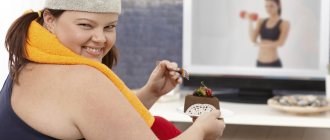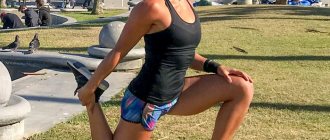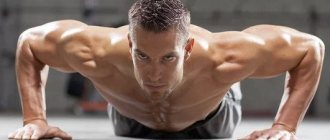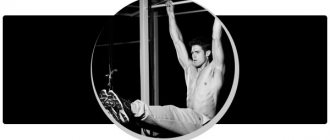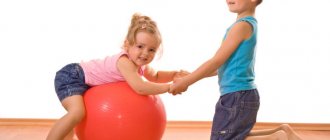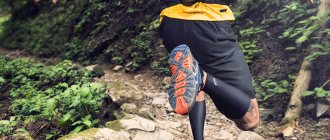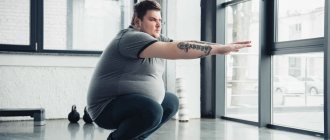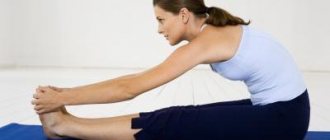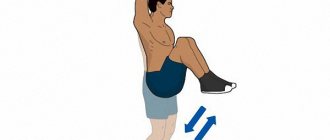Efficiency
The Butterfly expander has become the most affordable means for correcting body lines. It is suitable for all age categories. Even people who have nothing to do with sports can use it.
Regular physical training with an expander improves the lines of the body and gives the body vigor. You just need to accurately master the rules for performing various exercises.
All physical exercises with an expander are based on the principle of compression. Exercises using this method have a high level of effectiveness and make it possible to strengthen the muscles of the body in a short period of time. An expander is especially useful for the fair half of humanity, since with its help it is possible to work out the muscles of the inner thigh.
Exercises with an expander require no more than half an hour a day. You can also do shorter sessions throughout the day. They serve as an excellent addition to cardiovascular training or aerobic exercise. To increase the effectiveness of exercise, it is recommended to resort to a short warm-up before it, which will stretch and warm up the muscles.
How to increase the effectiveness of classes
In order for the level of effectiveness from exercising with an expander to be high, it is recommended to adhere to the following rules:
- Don't give up on the workouts you've started. Physical exercise should be done regularly. At the same time, add the degree of load evenly.
- Spend at least half an hour a day on your studies.
Buttocks, lateral thigh
Stand next to a wall and rest your palm on it. With your other hand, hold the weight on the front of your thigh. Raise your opposite leg to the side about 45 degrees from the floor. When doing hip exercises with weights, pull your heel up and your toes and knee down. If difficulties arise, reduce the amplitude of the lift. Do 3 sets without swings or jerks, 12 times on each leg.
Perform exercises with dumbbells correctly and get amazing results in just a few months!
Pros and cons of exercises with weights
Movements with weights are available to everyone, they can be performed as a warm-up complex, and after the main strength ones, it all depends on the level of the athlete. Weights can be taken with you on trips and trips; they are also a good solution for a home gym.
However, training with weights, especially in aerobic mode, has significant disadvantages:
- It is not recommended to wear weights for walking and running. Even the best of them are not attached rigidly enough and change the trajectory of movement when running and walking. This can lead to ligament strain and joint injuries, although weights are traditionally believed to help burn more calories. In fact, this “more” is comparable to the amount you would use if you walked or ran 10 minutes longer. Therefore, perhaps all these manipulations are not worth carrying out;
- You should not work in the swing amplitude. Many people take the names of exercises literally and try to “push” their legs into swings with force, which can also lead to injury to joints and ligaments. In fact, weights are a very unstable projectile and their use cannot be considered safe if it is a question of incorrect technique;
- It’s quite difficult to progress for a long time at home with weights. Let's say you increase the weight of the weights, moving from half a kilogram weights to 2 kg, then choosing the maximum weight. What's next? For most people who train regularly, such weights become insufficient after about six months of training. Then you can, of course, add the resistance of a rubber shock absorber, or you can finally go to a specially equipped room. Attempts to add resistance by performing 8-10 sets of one exercise instead of 3-4 usually only lead to increased endurance, but not strength and muscle tone. And accordingly, they do not give any visual effect;
- "frivolous character" Few people consciously control movement during the entire set of exercises with weights, which is a significant disadvantage, because this way the target muscles are not worked and “bad motor habits” are created, which then spoil the posture.
How to train with weights
For aerobic exercise, it is better to choose not some swings, but exercises “specially adapted” for this by nature itself - running and walking. In this case, it is better to leave weights at home and wear them only for strength training.
Before “pumping your legs with weights,” you should at least do this complex:
- squatting without weights in static dynamics. Slowly lower yourself into a squat for 30 seconds and return to the starting position so that no more than 3-4 repetitions fit within the specified time interval, repeat 3 cycles, then 5 minutes of any cardio activity, such as walking on stairs or on a mini-stepper, and 2 more repeating the entire cycle;
- bending forward with weights or resistance. Take a rubber shock absorber or the same weights in your hands and perform bends in the same static-dynamic mode as in the previous exercise.
After this cycle, you can also do swings with weights:
- On the back of the thigh. Get on all fours, palms under your shoulders, knees under your hips, lower yourself onto your forearms. Now carefully move your right leg back and fix it parallel to the floor. Slowly bend your weighted leg, bringing your heel toward your buttock and consciously squeezing your hamstrings. Then return to the starting position and repeat on the other leg;
- On the gluteal muscles. Raise your straight leg back from the same starting position, making sure that your pelvis is “parallel” to the plane of the floor and does not warp relative to it. Distortions relieve stress on the buttocks;
- On the gluteal and abductor muscles of the thigh. Without changing the starting position, bend your right leg at the knee and move your thigh to the side so that the bent leg extends into a plane parallel to the floor. Slowly bring your leg back. To avoid distortion, first de-weight your working leg, pull in your stomach and tighten your back muscles, and only then perform the exercises themselves;
- On the adductor muscles of the thigh. Change your starting position, lie on the floor on your back, and move your legs perpendicular to the floor. Slowly spread and bring your legs together, trying to ensure that at the extreme point of the exercise your heels do not “fall” to the floor, but still maintain control over the movement.
Perform these exercises for 12-15 repetitions maximum, trying to keep the time under tension to no more than 40 seconds. If you can "swing" more and more actively, you have done the first part of the complex without weights incorrectly, or you probably have weights that are too small. There should be no more than 3-4 working approaches. Rest between sets is at least 45 seconds, but no more than 60 seconds.
For legs
Placed over the calves to enhance resistance. With them you can run and just walk, jump, do various types of lunges, squats and other techniques. Weight on the lower extremities will be useful on the day of abdominal muscle training, for example, for lying leg raises or hanging on a horizontal bar.
The purpose is to:
- gaining tone, getting rid of problem areas;
- increasing calorie consumption to accelerate weight loss;
- practicing the power of blows;
- increasing the complexity of aerobic programs.
This is convenient for those who do not play sports, but like to walk. A regular walk with weights on your ankles will become a healthy activity. By the same principle, it is appropriate to use it for dancing, as well as for swimming. A little weight on your legs will be useful for the practices of yoga, Pilates, and callanetics.
Some movements are not possible with a barbell or dumbbell, such as leg raises. Thanks to resistance, working on your hips and achieving slimness will be effective. Very soon you will notice that the lower part of the body has become stronger, the entire muscular system is more resilient.
Possible harm
Exercising with weights puts increased pressure on your ankles. If you act incorrectly or take on a weight that is too heavy for untrained muscles, the likelihood of injury will increase significantly.
At a certain point, weights will become scarce. There are practically no muscles in the ankles, so they will not cope with a weight of more than 5 kg. The main muscle groups will be ready for more difficult tests, but they will no longer be supported by the weight on the ankles.
Use for walking and running should not be too frequent. There are research results that regular impact can cause problems with joints and tendons. If you use too much weight, it will harm your hip joints and knees.
Weight on the lower limbs should not be used when:
- recent injuries to the lower extremities and back;
- joint diseases;
- rehabilitation after surgical interventions;
- urolithiasis;
- obesity;
- diseases of the heart and blood vessels.
Three gluteus maximus muscles
Gluteus maximus muscle
Did you know that the gluteus maximus muscle is the largest muscle in the entire human body? Its job is to support the torso in an upright position, which is the reason for its size and power.
As the name suggests, it is the largest and closest to the surface muscle of the entire gluteal muscle group.
The function of the gluteus maximus muscle is mainly to extend the upper legs (hips) - for example, when rising from a squat position. Another example of including this muscle in work is lifting the torso tilted forward. Picture yourself swinging a kettlebell and you'll get a good idea of how this muscle works.
Hip extension also occurs during deadlifting, pushing off the legs during running and skating, and simply while swinging the leg.
This muscle is also involved in turning the leg - for clarity, imagine, for example, a duck walk.
Gluteus medius muscle
The gluteus medius is the smallest of the gluteal muscle group, located beneath the gluteus maximus and provides stability to the hip joint, especially when standing on one leg. Thus, when walking or running (where the legs are used in turns) or climbing stairs, the gluteus medius muscle is tensed to prevent the pelvis from sinking to one side.
Moreover, the gluteus medius (and minimus) are involved in hip abduction.
Gluteus minimus
It is the smallest of the gluteal muscle group, located directly below the gluteus medius. Its main function is to provide stability to the hip joint. It works together with the gluteus medius muscle.
I hope that this little anatomical excursion did not confuse you. Essentially, that's all you need to know to perform the exercises. Well, let's move on to...
About the advantages
Weights are associated with free weights, but they are used not only for strength techniques. They are suitable for aerobic training, such as race walking. The goal is to make the workout more challenging, help you lose weight, build muscle mass, and increase strength and endurance.
Unlike dumbbells and other strength equipment, the cuffs do not need to be held and cannot be dropped. This increases freedom of movement, which is important for intensive training. In addition, such equipment practically becomes part of the body; they do not create such high pressure on the musculoskeletal system as free weights.
Exercises with weights
Dumbbells: It is recommended to purchase prefabricated dumbbells, the weight of which can vary from minimum to maximum. The range of exercises proposed below is aimed at training both individual muscle groups and the entire body.
Take a “skier pose”, your back is straight, your free hand should rest on your knee. Raise your arm with a dumbbell bent at the elbow to chest level. Slowly straighten your arm and move it behind your back. Repeat the exercise for 2-3 minutes for each hand.
Lie on the floor, bend your knees and place your feet on the floor. Taking dumbbells in your hands, lift them, forming a right angle at your elbows. The dumbbells in this position should be at the level of the middle of the forehead. After lifting the weight, straighten your arms and bend them again. Repeat the exercise at least 10 times.
Taking dumbbells in your hands, straighten up in a standing position. Raise your arms with dumbbells above your head in parallel or alternately. Your arms can be kept straight or bent, but should not be thrown behind your head. Do the exercise at least 15 times.
Grab dumbbells and stand straight with your feet shoulder-width apart. Stretch your arms forward and out to the sides. Next, slowly bring it together again. The exercise is repeated for at least 2 minutes.
Previous starting position. Extend your arms with dumbbells parallel to the floor to the sides. Lower your hands to your hips and raise them again. Do the exercise at least 5-10 times.
Previous starting position. Hands with dumbbells are spread out to the sides and are at shoulder level parallel to the floor. Now begin to move your arms forward and backward in circles. Moreover, if your palms are up, the load will be on a large muscle group. The exercise must be done for at least 1 minute.
Previous starting position. One dumbbell in hand. Straighten your arms in front of you, holding a dumbbell with both hands
Slowly raise your straightened arms up and then carefully lower them. You will immediately feel the tension in your pectoral and shoulder muscles.
Repeat the exercise up to 10-15 times.
Previous starting position. Bend your elbows and hold the dumbbells with your palms facing up. Lower and raise your arms up to 10-15 times.
Previous starting position. Start bending your arms with dumbbells so that they are at mid-chest level. Keeping your arms parallel to the floor, spread your elbows. Next, straighten and spread your arms to the sides. For an enhanced effect, you can turn your fists vertically and parallel to the floor. The exercise is repeated 5-10 times.
Take the starting position on your back. Take the dumbbells in your hands and, straightening them, throw them behind your head.
Raise your arms straight as you inhale and fix them at chest level. Return to the starting position as you exhale.
Effective exercises for quickly losing weight on your thighs: creating a hip line
Effective exercises for losing belly fat: a quick way to a slim silhouette
Exercises for losing weight at home: we do without gyms
Exercises for a beautiful gait
Effective physical exercises against cellulite on the thighs and buttocks
Exercises with weights
Strong back. Strengthening the back muscles. Gymnastics to strengthen the back
Bodyflex lessons. Bodyflex: exercises for legs, waist, hips and buttocks
Exercises on a fitness ball. A set of exercises with a gymnastic fitness ball
Martial arts for women to be or not to be...
Fitness club at home (at home). How to do fitness at home?
Home sports: exercise sets
Exercises for a beautiful figure. A set of exercises for a beautiful figure
Exercise classes. Techniques and rules for training on simulators
Water aerobics: a set of exercises
Beautiful, strong hands! A set of exercises for arm muscles
Exercises with an expander for women. A set of exercises with an expander
Planning lessons
The exercises listed above are quite enough for a full workout. But for classes to be beneficial, they must go according to plan. It's better to start with cardio and move on to working on problem areas.
A lesson plan might look like this:
- cardio part. The circuit consists of 30 seconds of maximum intensity and 15 seconds of rest. Perform cycles of two circles with pauses of a minute between them;
- training for buttocks and thighs. At least 5-6 approaches for each exercise;
- Ab training. At least 2 approaches for each.
- The number of circles and exercises depends on the level of training. Increase the intensity level gradually.
Exercises for legs and buttocks with weights.
Abdominal exercises
A. Lie down on the floor. Hands behind head. Make sure that your head is always pressed to your hands while doing the exercises. b. Raise your head and lower your legs slightly and fix them at an angle of 45 degrees, hold in this position for 2-3 seconds. Then return to the starting position. Rest for 1-2 seconds and lift up and slightly bend your knees. Repeat the exercise 10–15 times.
Exercises for the buttocks
A. Place your hands on the floor: fingers together, elbows apart. Legs are bent at the knees. Hips should be perpendicular.b. Slowly swing your left leg back until fully straightened. Hold at the top for 2-3 seconds, then return your leg to the starting position. Do the exercise with your right leg. Keep your balance. Repeat 10–20 times with each leg.
Exercises for the back of the thighs
A. Lie on your stomach with your thighs pressed to the floor. Rest your head in your hands.b. Without bending your knees, alternately lift each leg 10 times. When you can do the exercise without much effort, increase the number of repetitions.
Exercises for the outer thighs
A. Lie on your side. Straight legs together, in line with the shoulders. Support your head with your hand. For balance, rest your other hand on the floor. b. Raise your leg to shoulder level, then slowly lower it over 2-3 seconds. Repeat the exercise 10 times, then turn to the other side and do the same with the other leg. Make sure your feet and knees are facing forward. Pull your stomach in to support your back muscles.
Exercises for the front of the thighs
A. Stand up straight. Hands on the belt, legs together. The knee of the left leg is slightly bent. Make sure your back remains straight while doing the exercises. b. Slowly raise your left leg so that your thigh is parallel to the floor. Hold this position for 2-3 seconds, then slowly lower your leg. Do the exercise with the other leg. Repeat 10–15 times. But to have an effect, you must walk quickly and energetically, but at least 30 minutes a day
Remember that when losing weight properly, it is important to use all methods in combination. If you actively engage in sports, but at the same time do not limit yourself at all in food, eat junk food at night, or indulge in sweets, there will be no effect
But there is no need to overdo it either. Meals should be complete and varied, take equal intervals between meals, and avoid snacking. Eat more vegetables and fruits. Play sports, but you don’t need to exhaust yourself with exercise, exercise should give you pleasure. This, it seems to me, is the secret of healthy, effective and proper weight loss. Use weightbelts and the results will not keep you waiting! Our online store has a large selection of training products: wall bars, DSK, horizontal bars, parallel bars, gymnastic rings, rubber loops, expanders, TRX loops analog and original of the TRX PRO Suspension Training Kit, TRX Force Tactical, Bubnovsky tubular expanders, GD Grip wrist expander , Heavy Grips and Captains of Crush, finger expander exercise machine Finger Exerciser, bar extenders, weight vest with metal weights and bulk with sand, leg weights, weight belt, metal and lead weights for weights, sand weights, sandbag (sandbag) with a weight from 16 to 92 kg, medicine ball (medicine ball - medicine ball) from 3 kg to 12 kg, a stand for crossfit and jumping plyobox. Ropes for CrossFit, climbing and tug-of-war, high-speed jump ropes, Elevation Training Mask 2.0, ladder for CrossFit and TORRES fitness, Nordic walking poles. Sports nutrition: amino acids (BCAA BCAA, arginine Arginine, taurine Taurine, AAKG AAKG), gainers, proteins (whey Whey, Isolate isolate, Casein casein, hydrolyzate, egg EGG, soy).
Home » Components » Exercises for slender legs with weights. Exercises with weights for legs, arms, buttocks
Warm-up
Before you start training with weights, do a warm-up. This will help prepare the body for active exercise. Start by lightly stretching your body. Stand up straight, clasp your hands together and extend them in front of you. Your knees should be slightly bent. Pull your arms forward and round your back. Stay in this position for 10 seconds. After this, stretch up, stretching your spine. Place your hands behind your back and move them back. Can be repeated several times. Now you are ready to do weight loss exercises.
Remember! If you want to adjust your arms, torso or shoulders, take dumbbells in your hands. If you need to correct your stomach, thighs or buttocks, weight your legs. Let's move on to exercises for different “problem areas”.
Hand weights
First manufacturing method
It’s worth noting right away that this is the most difficult method presented, and therefore you will need to try. It is advisable to have a sewing machine at home, because this will speed up the process significantly. But you can do everything with your hands.
To make your own weighting materials, you need to use the following materials:
- Four pieces of fabric. Nylon or cotton will do. The length should be 33 cm and the width 13 cm.
- The strap is 91 cm long and 2.5 cm wide.
- Rectangle or ring with dimensions 2.5 by 5 cm.
- Velcro. Many people wonder how to make Velcro at home. In this regard, I would like to say that this is not such an expensive material that you would bother too much and try to make it yourself. It’s much easier and faster to go to the first clothing accessories store you come across and buy.
- Rice or sand. You can also use any other material that will be used as a filler.
It is necessary to accurately measure two piles of filling material that will be located inside. Each section that is filled to the top will ultimately give 0.5 kg of weight. The same must be done with sand if you choose such a filler. If you want to gain more weight, then you should increase the fabric width.
We also recommend reading: How to play rubber band on your hands Drying your hands How to cook quinoa What is Body Combat
Strap and clasps
- We cut the belt into two parts of 45 cm each. We melt the edges with fire, and then fasten the ends well. This will prevent the straps from wearing out.
- We adjust 2.5 cm of each end of the belt.
- Place the ring in the fold.
- We take the Velcro and place it at the opposite ends of the belt from the ring in the center of the strip. First you need to attach one Velcro, and then the second, which is installed with the wrong side down. Sew both Velcro strips into place.
- Take two pieces of fabric. In the center of the first we sew the finished belt, which already has Velcro.
Which compact exercise bike is better for home?
Sewing the fabric
- Take an unused piece of fabric and place it on the one that has a sewn belt.
- We fasten the belt in the center so that it does not fall into the seam.
- We sew 3 edges of the material with a running stitch, and leave the wide edge free.
- Turn the fabric right side out and check that all the flaps are sewn evenly.
- When you are convinced of its reliability, you can thoroughly sew the fabric, but make sure that the belt is not sewn on.
- Press everything down well.
Sections and corners
- Place the workpiece face down.
- We find the center of the future weighting material and mark it.
- Now we look for the centers of each half of the weighting material and mark everything.
- We divide the resulting fabric using zip ties so that we end up with four even sections.
Filler
- Fill all free sections with sand or rice. The main mass should be away from the seams.
- Don't try to stuff rice into every corner. After all, in this way the weighting material will bend poorly.
- We distribute the filler very well throughout the pocket.
- Sew up the hole. Position the seams so that they are as close to the edge as possible.
The weighting material is completely ready, and you can try it out during training.
Using the same method, you can make your own vest for weights. Identical pockets are sewn in the same way. There is no need to sew the vest itself entirely yourself. All you have to do is find an old, durable shirt or jumper and add pockets to this clothing. People who were interested in how to sew weights with their own hands will be able to create a vest without any problems, since they now have the necessary information.
Second way
They can be used very successfully during squats. These weights are used to do swings or lunges, and are also worn when drying hair or preparing food. When various movements occur, weights work on the figure.
With this option, they can be made in just 4 steps, and you don’t need to have any seamstress skills.
Necessary materials:
- several long socks;
- rice;
- plastic bags.
Manufacturing:
- Collect the dry rice and pour it evenly into two plastic bags.
- We twist the sealed bag and place it in a sock.
- Now we take scissors and cut off the ends of both socks so that they can be used as a tie.
- We put on weights and start moving.
Exercises for the spine at home
